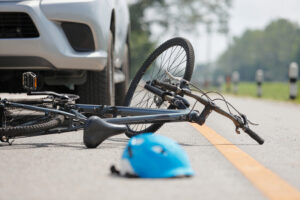
Nighttime driving presents additional dangers than daytime, partly due to lower visibility. This is especially true when large trucks are involved. Drivers have slower reaction times at night, and when they can’t see the entire outline of a commercial truck to gauge its size and positioning on the road, truck crashes can occur.
Trucks have clear requirements for approved Department of Transportation (DOT) reflective tape in specific colors, lengths and sizes, and on specific areas of the vehicle. Still, many trucks do not meet these regulations. And yet, studies confirm that reflective tape regulations can reduce nighttime trucking accidents, so the importance and value of the tape are clear.
A report by the National Highway Traffic Safety Administration (NHTSA) outlined the effectiveness of reflective tape requirements in increasing the visibility of heavy trailers. The study found that passenger vehicles that collide with the rear and side of tractor-trailers were reduced by 29% due to reflective tape.
Far too often, the driver of a passenger vehicle doesn’t see a truck or trailer until it’s too late, and the result can be devastating. This is why awareness and enforcement of reflective tape regulations are essential; it saves lives. Drivers can be ticketed for not meeting the requirements, and the truck can be taken off the road.
DOT Reflective Tape Requirements
Commercial trucks must meet DOT reflective tape requirements if their width is 80” or more and gross vehicle weight is at least 10,000 pounds. There are requirements for both the sides and rear of large trucks, with specific colors, sizes, and shapes to increase visibility. Reflex reflectors are also an option.
Rear DOT reflective tape requirements:
- Red and white striped tape extends across the entire bottom and lower rear bar, as close to the edges and as horizontal as possible.
- 12” inverted silver or white L’s on the top left and right corners, with its positioning horizontal and vertical, and as close to the top as possible.
- The centerline of each strip or reflector has to be between 15” and 60” above the road (or as close as practicable) when the trailer is empty.
- Truck tractors must have similar tape placement on the rear (lower red and white reflective tape and a pair of L’s on the top corners).
Side DOT reflective tape requirements:
- Red and white striped tape extends at least 50% of the truck’s length; it doesn’t need to be continuous, but the spacing between the reflective tape strips should be fairly even.
- The tape placement needs to be as close to the front and rear edges and as horizontal as practicable.
- The centerline of each strip or reflector has to be between 15” and 60” above the road (or as close as practicable) when the trailer is empty.
Truck Accident Statistics and Causes in Virginia & the U.S.
Virginia trucking accidents are riskier than the average car accident because of the size and weight difference; commercial trucks can be 20 to 30 times heavier than passenger cars. In 2020, there were 2,356 accidents involving large trucks in Virginia, 58 of which were fatal.
When a truck driver improperly changes lanes, follows too close, is speeding, or makes an improper turn, there’s increased danger. Coupled with low visibility during nighttime driving, avoiding truck crashes can seem impossible, but the use of DOT reflective tape has prevented many accidents.
According to the Insurance Institute for Highway Safety, more than 4,100 people died in large truck accidents in 2019. Just 16% of those deaths were truck occupants, while 67% were in other cars and passenger vehicles. The remaining 15% of fatalities were pedestrians, bicyclists, and motorcyclists.
Reflective Tape Limitations
In 2019, 74% of fatalities involving large truck crashes were tractor-trailers, and 27% occurred between 9 p.m. and 6 a.m. Even though there are DOT reflective tape requirements for truck trailers, tanks, and beds, many of them aren’t properly outfitted. Failure to meet these standards creates more danger to all drivers.
But does the tape increase visibility in all situations? Unfortunately, this safety measure may be less effective when another vehicle’s headlights hit the DOT reflective tape at an angle. The addition of reflective or high-visibility paints on commercial trucks could provide additional safety.
Other Safety Rules & Regulations for Trucks
Beyond DOT reflective tape requirements, the Federal Motor Carrier Safety Administration (FMCSA) has other trucking rules and regulations in place. Drivers cannot have any alcohol or drugs before or during their drive and must take 30-minute breaks after eight hours of driving time.
The hours of service (HOS) regulations set parameters for how much a driver can work each day and week. The HOS rules prevent driver fatigue and promote road safety for everyone behind the wheel, on a bicycle, or pedestrians. The maximum work shift for commercial truck drivers is 14 consecutive hours, with ten consecutive hours off required before working again.
Truck Accident Lawyers Can Help
Those at fault in commercial truck crashes could include the drivers, but also the trucking company, truck owner, broker, or even equipment manufacturer (if it contributed to the crash). Weather conditions, driver error, and distracted driving are common factors in tractor trailers’ accidents.
Given the complexity of these cases, it’s important to hire an experienced truck accident lawyer when injured or a family member is killed. At Curcio Law, our extensive experience has helped those involved in Virginia truck accidents seek financial compensation for their injuries. For a free case review, contact a Curcio Law truck accident attorney online anytime or call/text 703-836-3366.

Tom Curcio has devoted his career to representing people seriously injured or killed in car, pedestrian, bicycle, and truck crashes, and by dangerous dogs, unsafe products, and premises. He works tirelessly to obtain the compensation his clients are legally entitled to so they may rebuild their lives with dignity. Tom is the co-author of the book Evidence For The Trial Lawyer, and a much sought-after speaker on personal injury, trial practice, evidence, and professionalism. Contact Tom at tcurcio@curciolaw.com.














Comments for this article are closed.